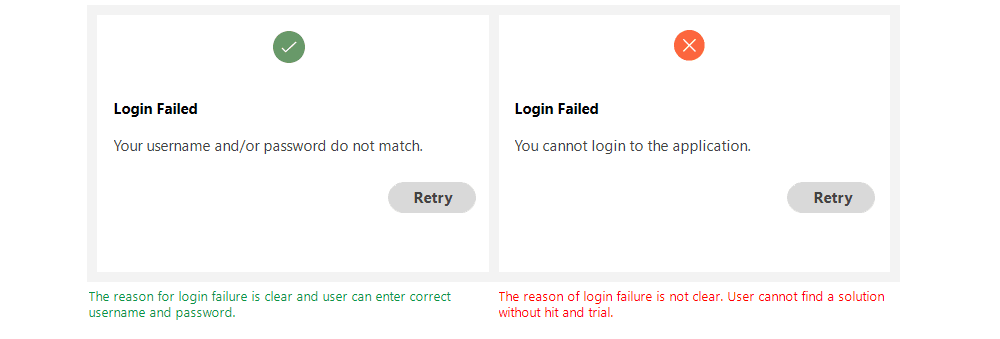When using software, users may trigger various types of responses from the software. One of these responses can be error messages, which occur when an operation fails or something unexpected happens.
Before considering the possibility of an error message, it is necessary to assess the need for displaying one. This means re-evaluating the experience in order to avoid the need to display an error message to the user. When this is deemed to be inevitable, their informative structure plays an important role:
Inform what happened and the cause
The message must provide context, be straightforward, and clearly related to what happened. This means providing the appropriate level of detail and avoiding technical terminology. Additionally, it should be written in a way that anyone can understand. When explaining the cause of the error, we should never blame the user, even if they triggered it.


Suggest a next step
After explaining what happened and why, inform the user of the available means to solve the problem. This means providing a way to give the user independence to solve the problem through a Call to Action. Alternatively, if that is not possible due to their permissions, inform them that someone (by name or role) will solve the problem within a specific time frame.

Find the ideal tone
Besides what must be displayed, the way that the content is provided also requires attention. Some studies have shown that error messages can trigger a physical response to stress indicators, increasing cortisol levels. To determine the ideal tone to use, two questions should be considered: How the user feels in this situation? If it is a complicated problem, being funny can be inadequate. How can have a conversational tone? The more the content is related to a direct positive speech the more adequate it will be.

Final thoughts
The structure of an error message is primarily comprised of the description of the error, its cause, and the next steps for resolution. The content should be clear, concise, meaningful, and free of technical jargon.
Sources:
https://medium.com/s/user-friendly/the-art-of-the-error-message-9f878d0bff80
https://uxplanet.org/how-to-write-a-perfect-error-message-da1ca65a8f36
https://uxplanet.org/how-to-write-good-error-messages-858e4551cd4